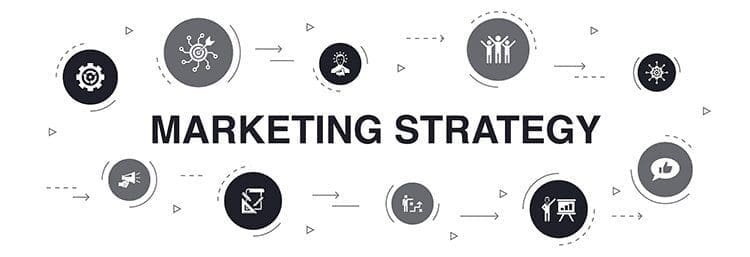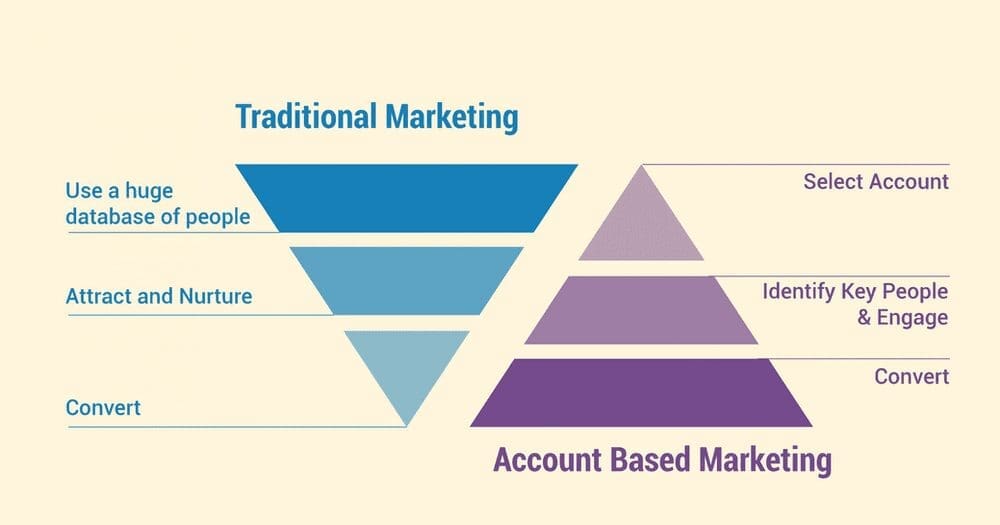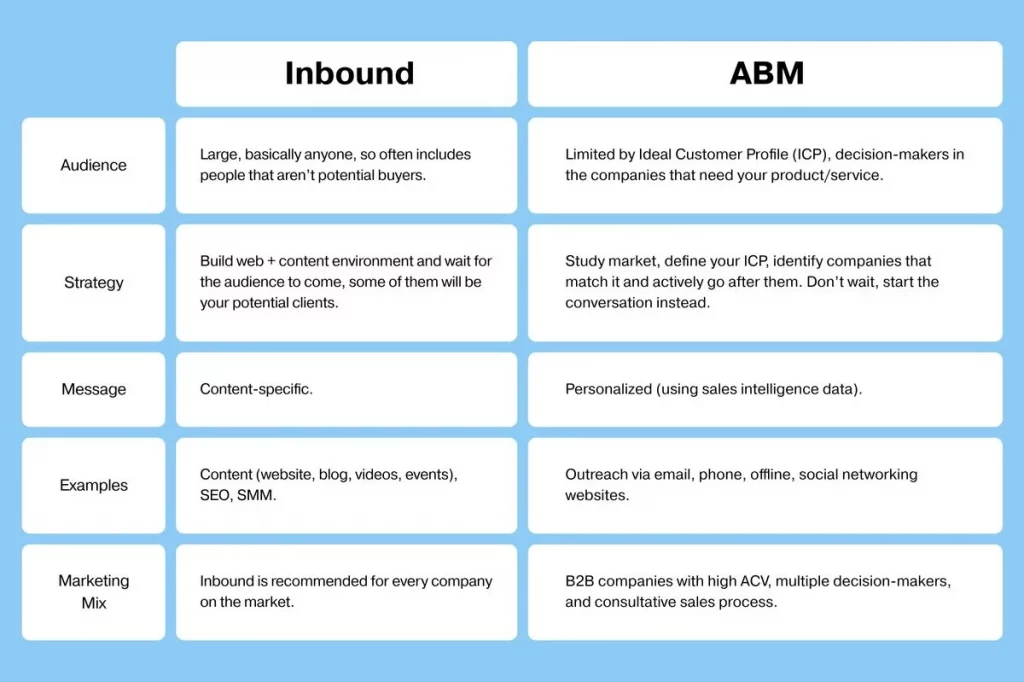Plan, Plan, Plan: The Importance of Planning Ahead and Developing a System for Marketing Content
Marketing planning is the key for marketers to reduce stress, anxiety, and missed opportunities while remaining focused on your strategy.
Marketing planning is the key for marketers to reduce stress, anxiety, and missed opportunities while remaining focused on your strategy.
If you’re responsible for marketing a business-to-business (B2B) product or service, it’s likely that your marketing strategy is focused on generating leads. A strategic marketing plan will help you focus your energy by setting goals and objectives, identifying the target market, defining the customer experience, and building out an effective lead generation process.
This blog post will cover the basics of developing a strategic marketing plan to help you engage prospects with targeted messages that are delivered at just the right time.

Your Planning Process should include the following:
Once you have a marketing strategy in place, it’s important to track progress and make changes as needed. Use these marketing planning tips to get started on creating an effective plan for your B2B business.

As you develop your strategic marketing plan, always remember to keep it simple. Don’t overthink things and spend too much time on creating a document that is 100 pages long. This could cause lack of engagement with the target market because they don’t have time or patience for such detailed information.
Now you’re thinking “how the heck am I going to get all this done?” It’s not easy but creating a solid foundation will help you stay on strategy as well as keep your marketing communications messages laser focused.
Keep things clear and to the point. This document can then be the foundation that your marketing efforts are built upon.

As I start to wind down the year (or at least try to), some thoughts are swirling. I’m still working on my book, “A Practical Guide for Integrative Marketing Fusion – Foundations, strategies & tactics for marketers, growth drivers & change agents” (working title). I’m currently 75 pages in and over 20,000 words with several sections to go. It’s been a fulfilling process for me with lots of reflection on my career, influencers, and drivers of my IMF marketing process. I know there’s a lot to do yet in terms of writing, then editing, design, artwork, etc., but I couldn’t be happier. As part of this I’m also including downloads of templates that I have developed and use today in my work. As I continue, I’ll keep sharing chunks of it here on my blog.

I want to mention what I believe to be the top marketing trends for B2B in 2022. Here are my thoughts:
Here are three of what I believe to be the biggest marketing failures this past year:
As always, I’m curious to hear your thoughts on what’s happening in B2B marketing. Please share with me on social media or email (john at babacita dot com). Thanks!
Marketing failures this past year include failing to align marketing and sales, not adequately targeting buyers early in the buying process, and misunderstanding how marketing is evolving.
I’m really looking forward to some time off at the end of the year for a chance to recharge and then come out of the gate with the marketing pedal on the floor.
As of now I have the following 2022 activities complete (could be a guide for you also)
Let me know if I can help guide you in any way and I want to wish you a warm season’s greetings.

During this holiday season, we want to express our thanks to each one of you, as well as share the magic of the season. The past year has been filled with many challenges and opportunities.
We are so very grateful to have the chance to celebrate the holiday season with our friends, family, and colleagues and wish you the same. May you find warmth in your home, hear sweet laughter, and receive special notes, calls and visits from loved ones.
Have a wonderful and peaceful holiday season!

The marketing industry is always evolving. The marketing world has seen the rise and fall of many marketing tactics over the years, but one marketing tactic that can’t be denied is account based marketing (#ABM). Account Based Marketing started with a focus on targeting accounts to gain new business. However, as ABM continues to evolve, it’s become more sophisticated than ever before. As marketers rely less on old-school sales methods like cold calls and start using tools like social media advertising to identify their target audience, they can pinpoint which people will benefit most from their products or services by listening in on conversations about relevant key words. With this knowledge at hand, marketers can craft messages that speak directly to these potential customers.

Thanks to the continued growth of account based marketing, businesses now have a better way to differentiate themselves from their competitors. Rather than targeting a wide audience with a one-size-fits-all message, ABM allows businesses to target specific accounts that are likely to be interested in what they have to offer. This level of personalization has never been easier, and marketing teams can now access tools that help them find the right accounts for their products.
There are 5 steps to keep in mind when initiating an account-based marketing strategy:

ABM has helped businesses gain new business by focusing on target accounts, and it can do the same for you. By following these simple steps, you can create an ABM strategy that will help your business stand out from the competition. So, what are you waiting for?
With the help of account-based marketing, businesses can focus on quality over quantity, and they’re able to see a real return on their investment. As more and more businesses adopt ABM as their primary marketing tactic, it’s clear that this approach is here to stay. Thanks for reading and get started on your ABM strategy today!
Public Relations is a very important part of any marketing campaign. It’s the way you get your message out to the public, and it can be used for all sorts of purposes. In this section, we will cover how public relations strategies work and what they can do for you. We will also talk about some of the most common PR strategies that are used in modern day marketing campaigns.
Public relations strategies are used to spread information about products, services, or business in general. These public relations strategies can be very effective if they are carefully planned out and executed correctly. When creating a public relations strategy, you need to consider all the possible outcomes of your actions while considering who your target audience is. You also need to determine who will be responsible for putting the PR campaign into action, how it will be executed and what the overall goal of it is. Dedicating individuals as media contacts and for staff to direct all media requests to those individuals. By streamlining requests and activities it will ensure a consistent message that is part of the overall strategy.
The success of any PR campaign depends on determining exactly what these things are ahead of time. This ensures that everything goes smoothly during the execution phase which greatly increases the chances for success.
There are many different types of public relations strategies that can help you increase interest in your company. One of the most popular is the press release. Press releases are typically used to announce new products or new partnerships with other companies. Press releases are usually written in a way that grabs the reader’s attention and entices them to read it.
Here are some tips for writing a successful press release:
In addition to distributing and editorial pitching on news releases, there are many other aspects of public relations.
The most important thing to remember is that anything you do in public relations should be done with the goal of building awareness, generating interest, and increasing sales. It’s not just about getting press coverage; it’s about paving the way for growth.
Many businesses also use social media as a platform for public relations strategies. When used correctly social media can have benefits such as brand awareness, increased visibility of your products, customer engagement etc… Here are some tips on how to successfully incorporate social media into your public relations strategy
The way marketers get information out is changing rapidly due to technology advancements, especially when it comes to marketing in media channels. These changes are creating new opportunities in markets that weren’t previously possible. According to a recent study by the World Federation of Advertisers, marketers will invest more in online advertising than TV advertising in 2017. This trend reflects how advancements in digital technology are allowing companies take the lead in fast paced marketing channels.
A lot of the new opportunities stem from the rise of programmatic technology. Programmatic advertising has allowed marketers to eliminate many of the middlemen in their companies and purchase ad space in real time at scale. This technology is already being used by prominent brands like Unilever, which spent over half a billion dollars on programmatic advertising in 2015.
Another recent trend that shows no signs of slowing down is the increase in content marketing. According to Content Marketing Institute, 85% of organizations are using some form of content marketing with 86% planning to use more this year. Additionally, consumers are spending an average of 3 hours per day consuming digital media. This means that there is a massive opportunity for companies to provide quality information through various outlets like blogs, social media, and online videos.
Lastly, the continuing growth of mobile technology means that marketers will continue to invest in mobile advertising. Mobile advertising is expected to reach $189 billion by 2020 with programmatic ads reaching $59 billion. This trend has allowed companies like Meta and Alphabet (to grow at an exponential rate due to their adherence of focusing on new product development.
Companies must adapt quickly to the changes occurring in the media landscape or risk becoming obsolete. However, it’s important not be overwhelmed when introduced to these new technologies as they can have a steep learning curve. This means being aware of what your company needs to do to stay competitive in your field. For example, if you’re not selling a product that most people purchase online then you should be focusing on marketing tactics that require less technological understanding.
As more companies are realizing the benefits of incorporating social media into their PR strategies, it’s important to stay on top of new marketing trends. It can be easy for marketers to get lost in all the new developments and forget how they should adapt quickly or risk becoming obsolete.
For every marketer, it’s important to research market trends and marketing strategies. Check out these 5 tips to get started.
I figure it’s time for an update on my marketing book. It seems the writing process ebbs and flows with time availability, energy and the right mindset but I’m cranking right along. Currently at 68 pages (18,000-ish words). I’m really happy with how this is progressing.
Here’s a look at the current outline and working title:
Foundations, strategies & tactics for marketers, growth drivers & change agents
Other elements to add in:
This answers the “Who are you talking to?” question. I break these down:
Each primary and secondary target audience must be broken down into a persona. What they think, how they use your product or service, what challenges do they face daily or annually? What attitudes, concerns or criteria drives customers to choose your product or service?
This also includes where they get their information? What do they read, listen to or watch? Where do they go or hang out? Do they use any buzzwords or industry speak? What are their professional goals?
Outlining your primary and secondary audiences will provide valuable insight into who you’re marketing to.
The persona development process can help you assess your target audience persona development much easier. This helps you identify the specific group of people that represent your target audience, and guide marketing and business to design experiences that are relevant for specific persona.
Each persona is a type of person represents, or a representation of, your ideal customer. This typically is based on real data from your existing customers.
When creating personas include demographics, behavior patterns, motivations, goals, and values. The more detailed, the better. This can is the foundations for your marketing tactics and programs. Your messaging and imagery should trigger emotions and actions in these personas. That will ensure an on-strategy tactic. Also look at your SWOT analysis and work the strengths and opportunities into your messaging if appropriate.
Essential information for persona development includes:
Persona development can also relate to other areas of business-like product design, branding, marketing, and sales. By understanding persona this way, you will be able to focus on the needs of your persona development which results in them returning to buy products or services from you over time.
Keep in mind that messaging and creative development need to support your brand assets. The brand assets are your checks and balances. If your tactics don’t support some or all the brand assets, then your tactic is off strategy. Consistency and repetition are key.
The primary goal of marketing is to communicate with your audience, and you must do this in a way that reinforces the values, tones, style, and strategy that your brand represents. The ultimate outcome should be an effective message that moves them to action.
Messaging (and every interaction) must support the overall brand. For this to happen consistently, there needs to be some framework or foundation from which you build everything on top of. These are the brand assets we discussed earlier in the book. Strong messaging comes from a strong branding foundation. Strong branding requires consistency so use brand asset checks and balances when implementing individual marketing tactics. Your brand assets are powerful tools at your disposal, and they need to be honored in every piece of communication.
You may remember seeing a box when you were writing an essay for school; we’re going to use the same idea in our marketing. Every time we launch a new campaign or message, we’ll check it against these brand asset questions:
If your answer is yes, then you can proceed confidently knowing that your messaging is not only on strategy but also reinforcing the branding foundation that’s already there.
If the answer is no, then you need to go back to the drawing board and ask yourself why. It will help you rebuild your branding foundation so that it’s stronger next time. Remember, you’re building this over time. Don’t give up!
By taking a holistic approach, messaging and creative will reinforce your brand values for marketing to be effective.
In marketing, it seems that teams lack creativity and motivation. It’s not enough to have a great product or service. You also need people who are inspired and empowered to do their best work.
The main cause of low team creativity is when teams feel unempowered to do their best work and let their ideas soar. They often feel like they’re just cogs in a machine, rather than valued members of a team who can make an impact on company goals and culture.
This post is to encourage more creative thinking by your marketing teams through exercises and activities that help them build skills in areas such as ideation, brainstorming, critical thinking, collaboration and much more!
In marketing, creativity is a key skill in your team. But creativity takes time and energy to develop, and it’s often lost in the fast-paced environment of many organizations today.
The best way to encourage creativity is by empowering your team members through exercises that will help them build skills in areas such as ideation, brainstorming, critical thinking, collaboration and much more! This post shares some ideas for how you can do this with your own team. If you have any other creative techniques or activities for boosting creativity at work, please share them here! The more we all know about what works well for others on our teams – the better off we’ll be.
These ideas allow creativity to flourish while also exposing your team members to new creativity inspirations, which is always a plus! There are so many more ways to encourage creativity, but these ideas will get you started thinking about creativity in different ways that may be completely counter-intuitive to your team’s current mindset.

Encouraging creativity is always an uphill battle when you’re dealing with people who believe creativity isn’t what they do or creativity doesn’t apply to them, but creativity is ALWAYS intertwined in everything we do so creativity needs to be addressed at some point. Creativity can come in many forms even if the result doesn’t turn out how your team might think of creativity because creativity comes in all shapes and sizes!
So, encourage creativity simply by allowing opportunities for creativity, starting creative conversations around business no matter how irrelevant it might seem to some, and encouraging creative thinking whenever you can! We don’t have a choice about whether our work will require creativity, so let’s embrace creativity today and all throughout our lives to continuously grow!
Some creativity examples to reference when encouraging creativity in your team:
“Creativity is the essence of change, and change agents are almost always seen as suspect. In business circles you can be labeled a “creative,” which often means that creativity is something you do late at night on weekends. Or it’s something that’s forced on us— like creativity crises.” (Wired for Thought)
“The consumer is not only pulling the strings of creativity; he or she has become its driving force.” (How Brands Grow)
One creativity book that I recently read was The Creative Curve by Allen Gannett (good read if anyone wants to read more about creativity). “Creativity is the essence of change, and creativity can be found in everything we do.” Whether you’re a marketing manager or not, creativity should always be encouraged to help your team grow!

Get creative whenever you can! Take new paths and be open minded because there are no rules when it comes to creativity. If anything, having too many rules about creativity. Creativity and curiosity go hand in hand so encourage your team to be curious about everything they do, no matter how mundane it might seem. Curiosity is creativity’s best friend because if someone is curious enough, they will find a creative way to solve the problem at hand. Never stop learning! Never stop experimenting! Never stop pushing boundaries! Never stop being crazy or weird even when people think you’re nuts for thinking outside the box! A “perfect” solution doesn’t exist, so experiment with anything you can to learn more about your industry/field of work because every action counts as an experience which equals knowledge which equals growth.
I want you to understand that fostering creativity isn’t just for creativity’s sake… creativity’s benefits are far-reaching, and growth can benefit everyone and everything within a company culture. Creativity thrives on anything, and everything so experiment with new ideas on creativity growth! Play games! Draw sketches! Take a painting class you always wanted to take! Never stop exploring your creative side because creativity costs nothing but pays dividends exponentially.
Thank you for reading! I hope that you enjoyed it and that it has given you inspiration for creativity growth within your team. Please feel free to add in anything that I may have forgotten or overlooked (although creativity is creativity and creative growth requires creativity so don’t limit yourself). The point is to inspire creativity growth everywhere and anywhere… do what inspires creativity within your company culture!